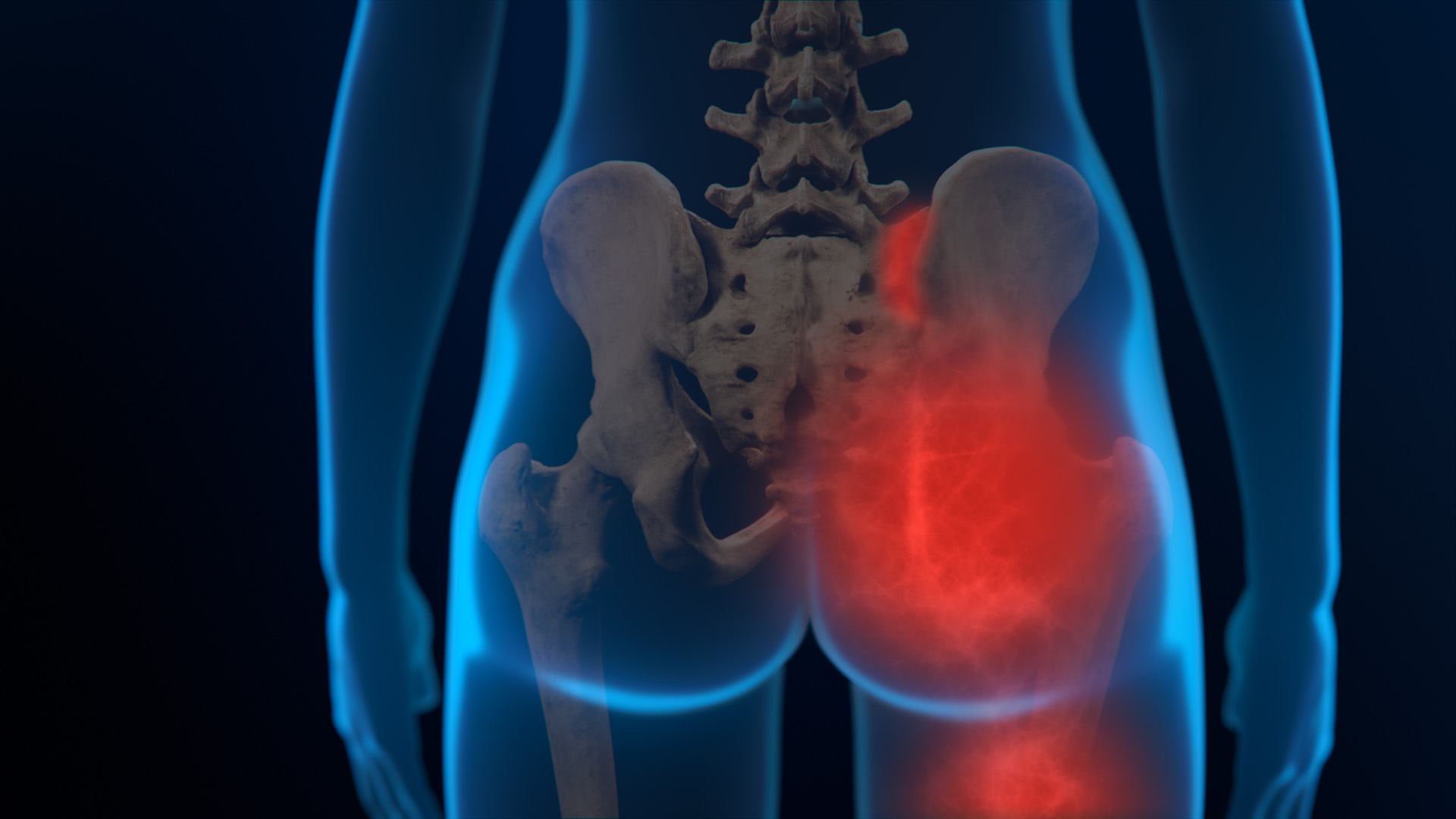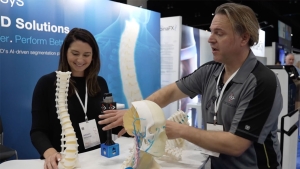Description
Sacroiliac joint pain, also known as SI joint pain, can be a debilitating condition affecting the lower back and pelvic region. The sacroiliac joint connects the sacrum (the triangular bone at the base of the spine) to the ilium (the upper part of the hip bone). When this joint becomes inflamed or experiences dysfunction, it can lead to discomfort and limited mobility. In this post, we will explore the causes, symptoms, and treatment options for sacroiliac joint pain, accompanied by insightful medical illustrations created by Ghost Medical.

Anatomy of the Sacroiliac Joint
The sacroiliac joint is a complex structure responsible for transferring weight and forces between the upper body and the lower extremities. Ghost Medical’s detailed illustration showcases the intricate architecture of the joint, including the sacrum, ilium, ligaments, and surrounding muscles.
Causes of Sacroiliac Joint Pain
Sacroiliac joint pain can be caused by various factors, including:
Injury or Trauma
A sudden impact, such as a fall or car accident, can strain or damage the sacroiliac joint.
Pregnancy
Hormonal changes during pregnancy can cause increased laxity in the ligaments surrounding the sacroiliac joint, leading to pain.
Arthritis
Conditions such as osteoarthritis or ankylosing spondylitis can affect the sacroiliac joint, causing inflammation and discomfort.
Symptoms of Sacroiliac Joint Pain
The symptoms of sacroiliac joint pain can vary from person to person. Some common signs include:
Pain in the lower back
The pain is typically localized on one side of the lower back or buttock area.
Hip or groin pain
Discomfort may radiate to the hip or groin region, often mimicking other conditions like hip arthritis.
Limited range of motion
Stiffness or difficulty in performing activities such as bending, standing, or walking.
Diagnosis
Accurate diagnosis is crucial for effective treatment. Medical professionals may employ various methods, including:
Physical examination
Assessing range of motion, performing provocative tests, and palpating the sacroiliac joint area.
Imaging tests
X-rays, CT scans, or MRI scans can help visualize the joint and rule out other potential causes of pain.
Diagnostic injections
Local anesthetic injections can be used to confirm if the sacroiliac joint is the source of pain.
Treatment Options
Treatment for sacroiliac joint pain aims to reduce inflammation, relieve pain, and improve joint function. Some common approaches include:
Physical therapy
Strengthening exercises, stretches, and manual therapy techniques can help stabilize the joint and alleviate pain.
Medications
Nonsteroidal anti-inflammatory drugs (NSAIDs), muscle relaxants, and pain relievers may be prescribed to manage pain and inflammation.
Joint injections
Corticosteroid injections can provide temporary relief by reducing inflammation in the sacroiliac joint.
Radiofrequency ablation
This minimally invasive procedure uses heat to disrupt the nerves that transmit pain signals from the sacroiliac joint.
Surgical Interventions
In rare cases where conservative treatments fail, surgical options such as sacroiliac joint fusion may be considered.

The Catamaran™ SI Joint Fusion System
The Catamaran™ SI Joint Fusion System by Tenon Medical offers a novel solution for patients suffering from SI joint dysfunction. Traditionally, SI joint fusion required large incisions and extensive tissue disruption. However, the Catamaran™ system takes a different approach, utilizing a single, sturdy titanium implant.The Catamaran™ SI Joint Fusion System offers a novel solution for patients suffering from SI joint dysfunction. Traditionally, SI joint fusion required large incisions and extensive tissue disruption. However, the Catamaran™ system takes a different approach, utilizing a single, sturdy titanium implant.
Conclusion
Sacroiliac joint pain can significantly impact one’s quality of life, but with proper diagnosis and treatment, relief is possible. By understanding the causes, recognizing the symptoms, and exploring available treatment options, individuals experiencing sacroiliac joint pain can take proactive steps towards recovery. Remember, it is essential to consult with a healthcare professional for accurate diagnosis and personalized treatment recommendations.













